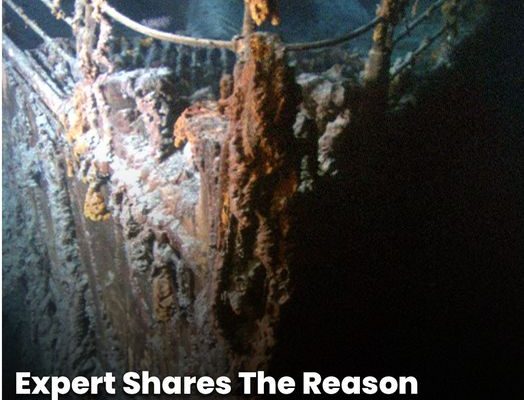An expert has shared the surprising reason no human remains have ever been found inside the wreck of the Titanic.
More than 100 years after its sinking, the Titanic still holds a particular fascination for many. And now, a curious story from the 1912 wreck has taken social media by storm.
Despite over 1,500 casualties, no human remains have ever been found on board the sunken ship.
This fact emerged in a strange Reddit thread where one inquisitive user asked, “Have any actual human remains ever been seen/recovered from the wreck since her discovery?”

People were quick to confirm that there has never been a confirmed sighting of human remains within the wreck. James Cameron, director of Titanic and a frequent explorer of the wreck, told The New York Times in 2012, “I’ve seen zero human remains.
We’ve seen clothing and pairs of shoes, which strongly suggest there was a body there at one point, but we’ve never seen any human remains.”
Redditors echoed Cameron’s sentiment. One wrote, “The closest thing Ballard had seen at the wreck were pairs of shoes that landed close together as if the body they belonged to decayed and that’s all that’s left.”
Another added, “During one expedition, there was a leather raincoat found on the ocean floor with two boots poking out of it and a conspicuous bulge in the middle of the coat. In the interests of good taste, they didn’t pick it up to see what was underneath, but I can imagine a similar scenario where human remains may have survived in some capacity.”
While this may sound like the beginnings of a conspiracy theory, there’s a simple explanation for the lack of human remains aboard the doomed ship. Experts have revealed that the conditions were not able to preserve corpses during the years the Titanic remained undiscovered on the floor of the Atlantic.
“The issue you have to deal with is, at depths below about 3,000 feet, you pass below what’s called the calcium carbonate compensation depth,” Titanic explorer Robert Ballard explained to NPR. “And the water in the deep sea is under-saturated in calcium carbonate, which is mostly what bones are made of.

For example, on the Titanic and on the Bismarck, those ships are below the calcium carbonate compensation depth, so once the critters eat their flesh and expose the bones, the bones dissolve.”
Another Redditor simply put it: “She was discovered in 1985. Any human remains (if any) would be long gone. Flesh doesn’t last long 2.5 miles underwater.”
According to Titanic Universe, experts have also argued that a storm on the night of the tragedy scattered the bodies of those in life jackets across a huge radius, meaning it’s unlikely they came to rest anywhere near the wreckage.



